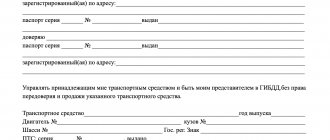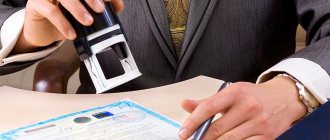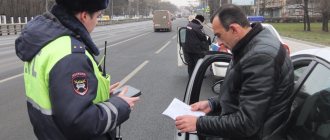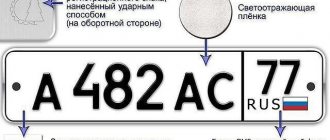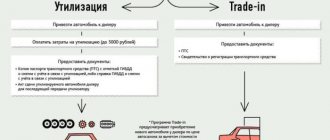What gives bailiffs the right to confiscate a car and what is an arrest?
This right to serve as bailiffs is assigned by the Federal Law “On Enforcement Proceedings” (hereinafter referred to as the “FZ”) of 2021. This is called a “seizure of property.” Specifically, Article 80 of this Federal Law says the following:
1. A bailiff, in order to ensure the execution of a writ of execution containing demands for property penalties, has the right, including during the period established for the voluntary execution by the debtor of the requirements contained in the writ of execution, to seize the property of the debtor.
A car is formally a movable property. This also applies, like everything in this article, to motorcycles, mopeds, scooters, tractors and other types of personal equipment.
But it is important to understand that an arrest does not necessarily mean the seizure of a car. Bailiffs don’t always confiscate a car. Often it is in the custody of the debtor (that is, during the sale the debtor is allowed to continue to dispose of it). And sometimes they can even simply restrict the right to use a car (Part 4 of Article 80 of the Federal Law).
How is arrest imposed?
The procedure for seizing property is quite simple:
- you have debts for which your car and other property may be seized,
- for such debts, a court order is formed or a court decision is made with the corresponding writ of execution,
- the writ of execution is handed over to the bailiffs,
- The bailiff service initiates enforcement proceedings and issues an arrest order.
Arrest should not be confused with confiscation. Formally, these are different things, although in both cases the car can be taken away. Confiscation is a procedural measure within the framework of criminal law, and is carried out by a court decision in a criminal case, in contrast to arrest, which is carried out as part of enforcement proceedings, including in administrative and civil cases (fines, bank loans and others).
No one can just take a car based on the mere existence of debts! To do this, 2 important formalities must be observed:
- Enforcement proceedings must be initiated against you (see the list of proceedings on the official website of the FSSP),
- and as part of this proceeding, an arrest order must be issued (it is also displayed as a result of a search by full name on the bailiffs website).
Only based on the result of the decision within the framework of the proceedings, bailiffs can take the car in 2021.
You will also be interested in:
- Pay the traffic police fine 1 ruble and it burns? Is this possible and what are the consequences?
- Bailiffs writing off fines from cards - which banks don’t charge them?
- A fine for average speed - is it legal and how to appeal?
Seizure of a car during a divorce
Arrested
Seizure
- We are looking into what measures were taken and for what violations. This information can be obtained through the websites of the State Auto Inspectorate and the FSSP or by visiting them in person. We receive there all the necessary documents confirming the sanctions.
- We voluntarily repay the debt or appeal the decision if we do not agree with the decision.
- We receive a resolution to lift the restriction and take it to the traffic police along with copies of receipts for payment for fines or demands.
- After this, it is recommended to re-check your car for the presence of enforcement proceedings in the enforcement bases.
A sample application to the court to remove the seizure from a vehicle is as follows.
Judge Presnensky District Court of Moscow R.R. Grishin Plaintiff Ivanova Natalya Mikhailovna, living at the address: Moscow, st. Krasnykh Zori, 28, apt. 18 Tel.: 8-922-892-89-78 Defendant Petrov Ivan Sergeevich, living at the address: Moscow, st. Bersenevskaya, 48, apt. 116 Tel.: 8-912-789-09-97
We invite you to read: Power of attorney for the right to represent interests in court
Application to lift the arrest
The Presnensky District Court is processing civil case No. 2-3451 on the claim of the plaintiff Ivanova Natalya Mikhailovna against the defendant Petrov Ivan Sergeevich for debt collection.
As a measure to secure the claim, a court ruling dated August 18, 2021 seized the property of the defendant (VAZ 21099 car, state number T 234 TR 177).
Currently, there is no longer a need for interim measures due to the fact that Ivan Sergeevich Petrov has fully repaid the debt under the claim by transferring non-cash funds to the account of the plaintiff Ivanova Natalya Mikhailovna.
According to Art. 144 of the Code of Civil Procedure of the Russian Federation, security for a claim can be canceled by the same judge or court at the request of the persons participating in the case, or at the initiative of the judge or court.
Based on the above and in accordance with the Code of Civil Procedure of the Russian Federation
ASK:
Cancel interim measures in relation to property (VAZ 21099 car, state number T 234 TR 177).
The following documents are attached to the application:
- Copy of the court ruling dated August 18, 2019.
- Payment order for the transfer of funds to the plaintiff’s account dated October 19, 2019 No. 347894.
- A copy of the resolution to initiate enforcement proceedings dated September 19, 2019.
- A copy of the vehicle seizure report dated September 20, 2019.
October 21, 2021 Signature___________
If your application is satisfied by the court, the judge will issue a ruling on the case, which, as a general rule, will enter into legal force after 15 days. Upon entry into force, the court office will give you a ruling with a note on entry, and will also send a copy of the ruling to the traffic police and the FSSP. If you doubt the integrity of the judicial apparatus, you can safely take the document to all services and departments yourself.
Any property that belongs to you documented by right of ownership must also belong to you actually. Bailiffs do not always perform their duties within the framework of the law, often “going too far”, infringing on the rights of property owners. Be armed with the necessary knowledge in the fight for your rights.
You can ask to return the car and be allowed to use it if the owner proves the need for travel. For example, a family lives far from a populated area, and a car is the only way to get to their destination. This does not guarantee a successful outcome of the case, but the bailiff can meet halfway and limit himself only to a ban on registration actions.
Can a car be confiscated for traffic fines?
Yes. For almost any unpaid fines, including those from auto-fixation cameras. But for this it is important to understand the terms after which the delay appeared, and how long it lasts.
These deadlines look like this:
- the driver or owner is given an administrative decision with a fine and given 70 days to pay (10 for entry into force, 60 directly for payment), if the person has not appealed the fine,
- after this period, the fine can be transferred to the bailiffs (and fines are not always transferred in practice),
- the bailiff, who is responsible for the information about the debt, initiates enforcement proceedings on paper and is obliged to give 5 days for voluntary payment,
- after this period, a decision may be made to collect funds from the debtor’s accounts - then the bailiff makes inquiries to banks (at random and not all) about the availability of the debtor’s accounts; if any are found, the money is debited from the card or accounts,
- further, if it was not possible to collect the debtor’s money directly, then an arrest may be imposed, only within the framework of which the car can be taken away to be sold against the debt.
Important! If the amount of your debt is less than 3,000 rubles, then arrest cannot be imposed (Part 1.1 of Article 80 of the Federal Law). We are talking specifically about each enforcement proceeding - that is, about each unit of debt, and not the total amount of all debts.
This also applies to civil debts.
How is a vehicle arrested?
A protocol is drawn up on the seizure of goods, vehicles and other things. The protocol shall indicate the date and place of its preparation, position, surname and initials of the person who compiled the protocol, information about the person against whom this measure was applied to ensure proceedings in the case of an administrative offense, and about the person in whose possession the goods, vehicles and other goods are located. things that have been seized, their inventory and identification features, and a record is made of the use of photography and filming, and other established methods of recording material evidence. Materials obtained during the arrest using photography, filming, and other established methods of recording material evidence are attached to the protocol.
If necessary, goods, vehicles and other things that are seized are packaged and (or) sealed.
A copy of the protocol on the seizure of goods, vehicles and other things is handed over to the person against whom this measure of ensuring the proceedings in the case of an administrative offense was applied, or to his legal representative.
Clauses 4-6 art. 27.14 Code of Administrative Offenses of the Russian Federation
If you lose a civil lawsuit for collection
If your debt arose as a result of a claim against you by a third-party organization or individuals, then everything here is similar to traffic police fines, and the car can be taken away by bailiffs if the amount of debt is more than 3 thousand rubles.
The most common categories of debts for which FSSP cars are taken away:
- recourse claim from the insurance company under compulsory motor liability insurance (a particularly common case is when the culprit did not provide a copy of the European protocol),
- a claim for compensation for damage in an accident when the culprit does not have auto liability insurance, therefore, he himself is responsible for the damage.
What to do if a vehicle is seized
First of all, you should find out, using the traffic police online service, for what reasons the arrest was imposed. Further, if you consider the decision to be justified, you should immediately pay off all existing debts to organizations and contact the authority that arrested you. If there is delay, the car will be sold at auction.
If the car is the subject of proceedings in court, it will be possible to remove it from arrest only after a verdict. And in the case of illegal customs clearance - only after going through the full procedure according to the law and paying all fines and taxes.
Arrested
Can they take the car for a loan if you don’t pay it?
Yes. This is a type of civil case. Moreover, we are not necessarily talking about a car loan - if any credit, loan or other obligations are not repaid, the debt can be collected at the expense of the debtor’s car. But only bailiffs. And there is a difference between a simple loan and a car loan when the car is pledged as collateral.
For a simple loan, the car is sold (sold at auction) by the bailiffs themselves, and the proceeds are used to pay off the debt. The difference then goes to the debtor's account.
In the case of a car loan, where the car is pledged to the bank, the scheme is slightly different, but even here the bank cannot simply take away the car. First, the bank is obliged to go to court to issue a ruling to recover funds from the debtor. As in all the schemes above, by court decision the writ of execution goes to the bailiffs.
But the difference here is that the seized car, which was taken by the bailiffs from the debtor, is not sold by the bailiffs themselves, but is transferred to the bank, and the bank sells it as collateral. At the same time, the buyer can transfer money to the account of the debtor directly, but only in the same bank, and the debtor will have secondary access to the account - the priority will be to write off the debt at the expense of the seized and sold car as collateral.
How to find out about the seizure of a vehicle
To be forewarned is to be armed! How can you find out if a car is seized? And how can bailiffs check a car for arrest using its Vin number? In order to find out whether any restrictions are imposed on your car, you need to visit the official website of the State Automobile Inspectorate of the Russian Federation.
- Follow the link https://traffic police.rf/check/auto/#;
- In the “Vehicle check” window that opens, enter the Vin of your car;
- Below, select the category “Check restrictions”;
- Click the “Request Verification” link.
In the window that appears, all existing restrictions will be reflected. In addition, on the same website you can check the history of car registration in the traffic police or the history of participation in an accident. This service is also convenient when purchasing a used car. All information hidden by the former owner will be known to you.
The bailiff notifies the owner of the upcoming seizure of the vehicle. But if the owner of the car lives at a different address, the procedure may take place without his knowledge. It is also advisable to make sure that the lien is lifted after the debt is paid off.
You also need to check the restrictions when purchasing a car. Since, according to the new law, the owner of a car is not required to deregister it when transferring it to another person, the buyer can find out about the seizure only when he begins to draw up documents for himself. In this case, the transaction will be declared invalid, but this will have to be done and the money returned through the courts. Therefore, it is better to conduct a check before signing the contract.
You can find out if there are any restrictions on a vehicle:
- On the FSSP website. To do this, you will need to enter the full name of the car owner and region of residence. To obtain more accurate information, you can use the extended form and enter your date of birth (if known).
- On the traffic police website. To do this, you need to go to the “Vehicle Check” section and enter the VIN number. There are several criteria listed below, from which you must select “Check restrictions” and click the “Request review” button below it.
- Enter the VIN code. You can find it in the registration certificate.
- Select “Check restrictions”. If you wish, you can check the information on other points.
- Next, a window with a captcha will appear. You will need to enter the number shown correctly for verification.
- After this, a detailed report will appear in a similar form.
Or you can get the most complete report with data that is not on the traffic police website
A full report on the car for only 292 rubles. You can save tens of thousands by not buying a car with defects!
If a car is the only source of income
It would seem that the logic is obvious - how will the debtor pay off his debts if his only opportunity to earn money on these debts is taken away?!
The subtlety here is that if the car is the main (not necessarily the only) source of income for the debtor, then the bailiffs do not have the right to take it away. Article 446 of the Civil Procedure Code directly speaks about this.
But there is a limitation - if you have even a slightly expensive car, then they can already take it away. According to the law, for the car to be inviolable against seizure by bailiffs, its value should not exceed 100 times the minimum wage. For 2021 it is just over 11 thousand rubles. Accordingly, if your car costs more than 1.1 million rubles, then they will be able to take it away from you for debts.
How to avoid having your car seized by bailiffs?
Here we are talking specifically about the seizure of the car by the bailiffs, and not when it is pledged to the bank. The most obvious way to avoid losing your car if bailiffs take it is to get rid of it. Property that does not belong to the debtor will not be able to be taken away... With the exception of exceptions, there is an important subtlety in this issue.
According to the law, you can get rid of property in 2 ways:
- sell a car,
- give it away.
But you can also rent out a car, and for free (otherwise, under the lease agreement, you will have to pay money, which must be used to pay off debts).
The subtlety is that the sale or gift of a car can be considered fictitious and illegal - only for the purpose of hiding property from the bailiffs. To do this, the bailiff sues to recognize the transaction as fictitious, and then the car will be taken away from the buyer. And imagine if on your part and his part the sale was initially in good faith!
If the car was alienated after the start of enforcement proceedings and, even more so, after the FSSP issued a seizure order, then the transaction will be declared invalid with a high degree of probability. Especially if it is proven that you continue to use the car, as well as family or other ties between you and the buyer/donor/tenant.
Other possibilities result in the inability to use the machine:
- disassemble the car into parts and provide the bailiffs with only the body for seizure as part of the arrest,
- hide the car.
Something else useful for you:
- Is it possible to drive a car after revocation of a driver’s license and for how many days?
- Is it possible and how to buy a credit car correctly?
- Why is a fine for using a cell phone while driving illegal?
Purpose and conditions of arrest
A car can be seized by bailiffs in cases where it is necessary to ensure its safety while the debtor repays the debt under a writ of execution issued by a court or other official or body.
A use restriction ensures that the value of the property does not decrease as a result of use. If the possibility of use is not indicated in the bailiff’s decision, this means that it cannot be used. A guarantee of suppression of actions according to the order is the availability of information about restrictions in the traffic police database, which, if such data is detected, does not carry out registration actions and does not allow passing a technical inspection.
If the debtor does not repay the debt within the period given to him for this purpose, the seized car will be sold. This also applies to a court decision on bankruptcy - after its adoption, the debtor’s property must be sold to pay off debts.

